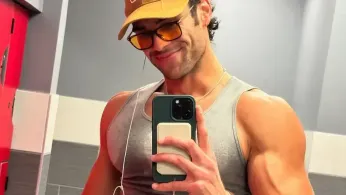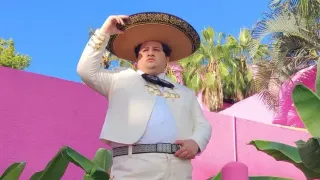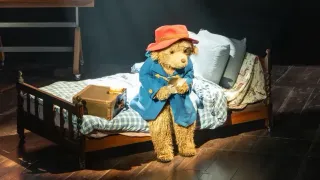
Nov 2
Hunter McVey’s Folie Magazine Photoshoot Is the Thirst Trap Queer Nashville Needed
READ TIME: 12 MIN.
If you’ve scrolled through queer Twitter, Instagram, or TikTok in the last 24 hours, chances are you’ve encountered the name Hunter McVey—and no, it’s not just another thirst tweet. The breakout star of 9-1-1: Nashville has just delivered a moment for the LGBTQ+ history books with his latest Folie Magazine shoot, stripping down to tight white shorts and sending waves of excitement through queer fandoms everywhere .
It’s not just the physicality; it’s the cultural resonance. In a landscape where queer representation on Southern screens is still a hard-won battle, McVey’s unapologetic embrace of the spotlight feels like a love letter to every viewer who’s ever wanted to see themselves—in all their steamy, joyful glory—reflected in mainstream media.
The Folie Magazine spread isn’t shy. McVey poses in barely-there white shorts, every muscle defined, every pose dripping with confidence. The images, shot by celebrated photographer Jason Kempin, lean into camp and sensuality, but with a wink—a knowing nod that says, “this is for you, girls and gays.” The response has been immediate and electric, with social feeds flooded by fans celebrating the shoot’s fearless queerness and Southern flavor .
For many LGBTQ+ viewers, especially those from the South, seeing McVey claim space as both a sex symbol and a star of a mainstream Nashville-based show is a quietly radical act. It’s a disruption of old stereotypes and a celebration of bodies, desire, and visibility that rarely gets this kind of spotlight outside of Pride month.
Representation isn’t just about being seen—it’s about being celebrated. McVey’s shoot arrives at a time when visibility for LGBTQ+ people in Southern media is still fraught, often reduced to coded characters or background extras. To watch a young actor from a primetime drama step into the queer gaze so powerfully feels like progress, not just for fans, but for the culture.
The Folie Magazine shoot is already being hailed as a watershed moment for queer Southern fans—a playful reminder that desire, glamour, and self-love don’t just belong in urban enclaves, but in the heart of country TV .
Social media has responded in kind: “Hunter McVey is giving the girls and gays everything we need,” wrote one fan on X, echoing a sentiment that’s reverberated from Nashville to New York .
McVey’s rise isn’t just about thirst traps—it’s about redefining what Southern masculinity can look like. On 9-1-1: Nashville, his character blends rugged charm with vulnerability, a mix that resonates deeply with queer audiences hungry for complex representation. The Folie Magazine shoot takes that further, offering a visual feast that’s both playful and affirming.
In an era when so much of queer news is shaped by struggle and resistance, moments of joy—especially those rooted in unapologetic self-expression—matter more than ever. McVey’s shoot is a reminder that queer happiness, desire, and Southern pride are not mutually exclusive; they can coexist, flourish, and inspire.
Hunter McVey’s Folie Magazine moment is more than a viral sensation. It’s a signpost for a new era of queer visibility, one where Southern stars can claim their space, celebrate their bodies, and invite fans of every gender and identity to join the party. For the girls, the gays, and everyone who’s ever craved more from mainstream TV, McVey just set a new standard—and Nashville may never be the same.






